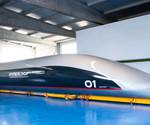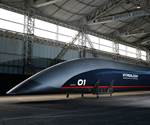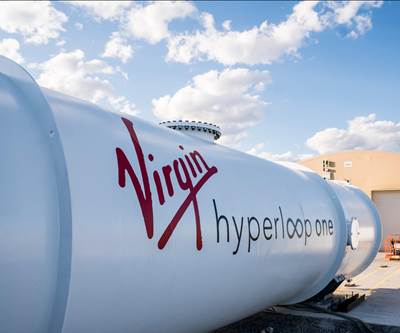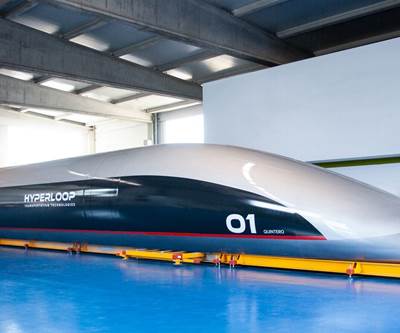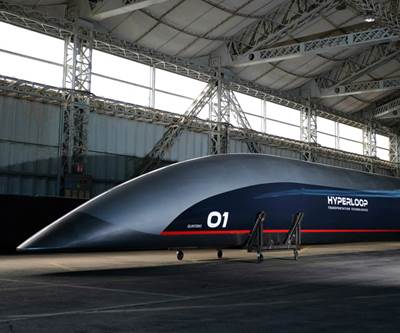Hyping the Hyperloop
A roundup of recent Hyperloop news including TUM’s Hyperloop Pod Competition win and announcements from SpaceX and VirginOne Hyperloop.
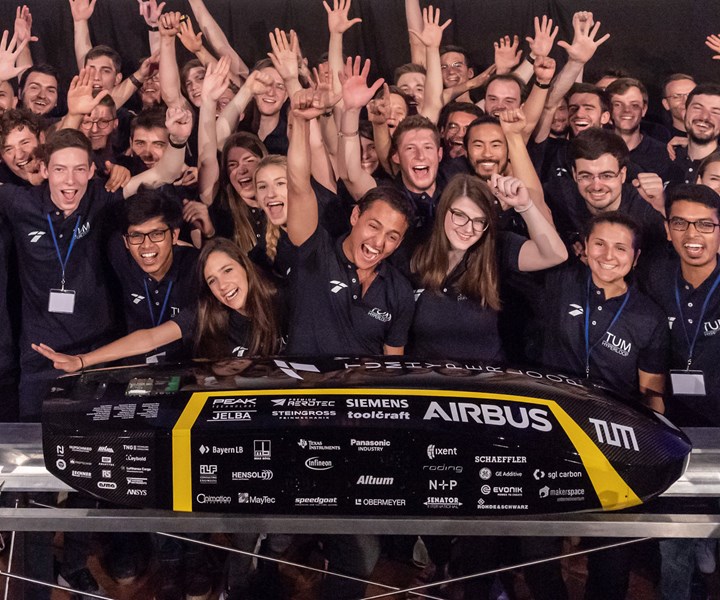
The Technical University of Munich hyperloop team has won the SpaceX Hyperloop Pod Competition setting a new record with a top speed of 463 km/h (288 mph). Source | TUM Hyperloop
Lately news about Hyperloop — the vacuum tube transport pod system envisioned by SpaceX (Hawthorne, Calif., U.S.) CEO Elon Musk — seems to move as fast as the futuristic mass transit capsules themselves.
On July 21, the Technical University of Munich (TUM, Munich, Germany) hyperloop team won the SpaceX Hyperloop Pod Competition for the fourth time in a row, setting a new record with a top speed of 463 km/h (288 mph). The team used a pre-impregnated woven carbon fiber material (prepreg) from SGL Carbon (Wiesbaden, Germany). Based on design and material optimizations, the carbon component of the current pod weighs around 10% less than the team’s previous model (5.6 kilograms compared to 6.1 kilograms).
Following the competition, SpaceX announced plans to build a new hyperloop tunnel to be used for the 2020 pod competition. Musk, apparently deciding to up the ante, announced on Twitter that the new vacuum tunnel would be 10 km (roughly 6 miles long) in length and include a curve — SpaceX’s current track is approximately a mile long.
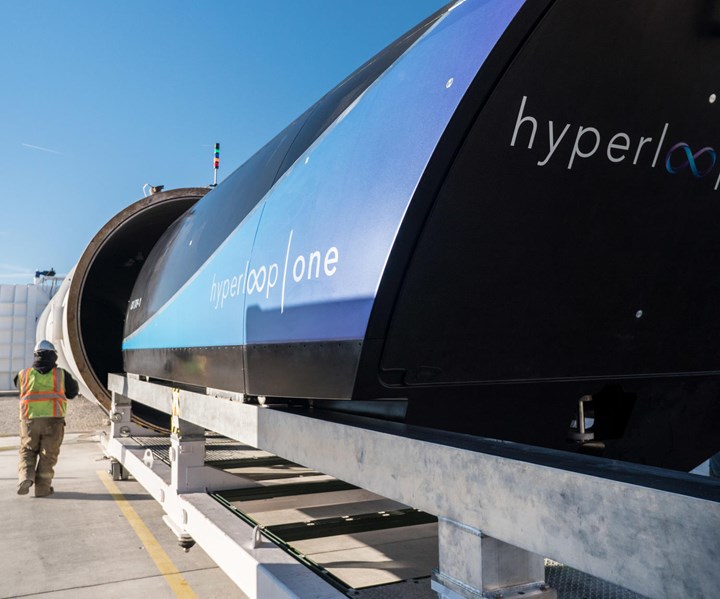
Source | Virgin Hyperloop One
On July 22, Virgin Hyperloop One announced plans to conduct a study to build a long-range hyperloop test track in Saudi Arabia. According to Virgin Hyperloop One, the study will focus on King Abdullah Economic City (KAEC), located 100 kilometers north of the Red Sea port of Jeddah. The project, which would include a 35-kilometer test and certification track, will create opportunities for the development of specific hyperloop technologies and develop local expertise in Saudi Arabia. The study will also facilitate the development of localized hyperloop supply chains and the acceleration of innovation clusters across the Kingdom.
All of this comes on the heels of a June 25 presentation by Virgin Hyperloop One to members of Congress, as well as meetings in late June between the United States Department of Transportation (USDOT, Washington, D.C., U.S) and Hyperloop Transportation Technologies (HyperloopTT, Culver City, CA, US).
Read more in CW’s coverage: “Virgin Hyperloop One presents technology to U.S. Congress” and “HyperloopTT offers USDOT first look at full-scale hyperloop system”
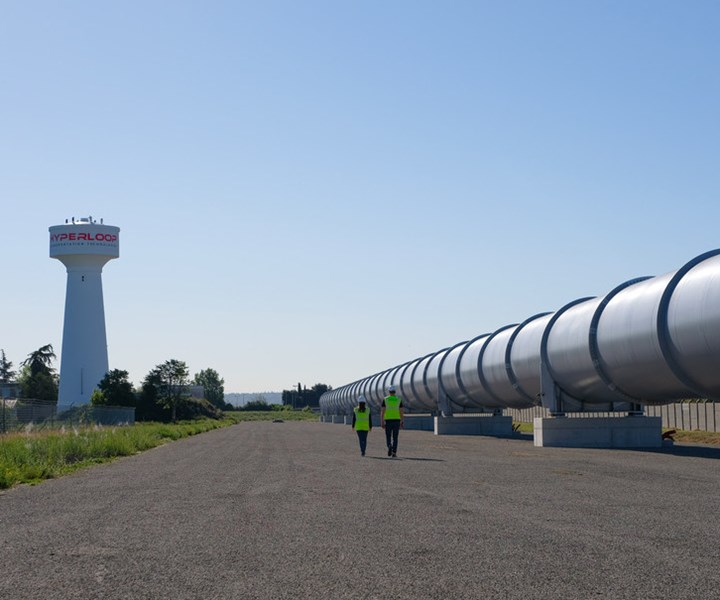
Hyperloop TT’s test track in Toulouse, France. Source | Hyperloop Transport Technologies
Hyperloop TT says it is now beginning the process of preparing its full-scale passenger capsule for human trials in 2020, which will presumably take place at the company’s test track in Toulouse, France. Meanwhile, Virgin Hyperloop One plans to begin work in December of 2019 on a track in India that would connect Mumbai and Pune, with the aim of reducing travel time between the cities from 3-4 hours (including traffic) to 25 minutes.
The race for hyperloop appears to be accelerating. What this means for the composites industry remains to be seen. Many of the competition capsules employ carbon fiber composites and Hyperloop TT’s passenger capsule boasts a carbon fiber composite embedded with sensors. Beyond the capsules, what materials might be considered as hyperloop tracks of increasing lengths are built? Time will tell, but maybe not as much time as you think.
Related Content
Plant tour: Albany Engineered Composites, Rochester, N.H., U.S.
Efficient, high-quality, well-controlled composites manufacturing at volume is the mantra for this 3D weaving specialist.
Read MoreMcLaren celebrates 10 years of the McLaren P1 hybrid hypercar
Lightweight carbon fiber construction, Formula 1-inspired aerodynamics and high-performance hybrid powertrain technologies hallmark this hybrid vehicle, serve as a springboard for new race cars.
Read MoreThe lessons behind OceanGate
Carbon fiber composites faced much criticism in the wake of the OceanGate submersible accident. CW’s publisher Jeff Sloan explains that it’s not that simple.
Read MoreCarbon fiber, bionic design achieve peak performance in race-ready production vehicle
Porsche worked with Action Composites to design and manufacture an innovative carbon fiber safety cage option to lightweight one of its series race vehicles, built in a one-shot compression molding process.
Read MoreRead Next
Virgin Hyperloop One presents technology to U.S. Congress
Virgin Hyperloop One working to grow roster of state and federal partners who support certification and regulatory investment in hyperloop.
Read MoreHyperloop Transportation Technologies unveils passenger capsule
HyperloopTT’s Quintero One, constructed of a smart composite comprised of carbon fiber with embedded sensors, is the world’s first full-scale Hyperloop capsule.
Read MoreHyperloopTT offers USDOT first look at full-scale hyperloop system
HyperloopTT reveals its full-scale 320m passenger system and presents the first certification guidelines for Hyperloop systems to USDOT officials.
Read More


